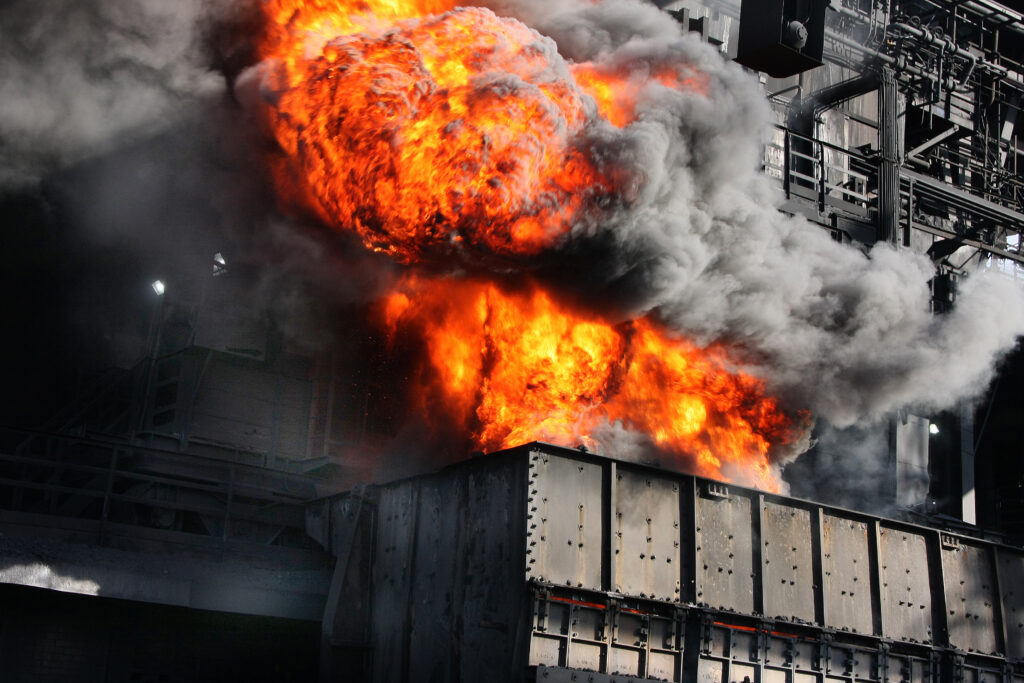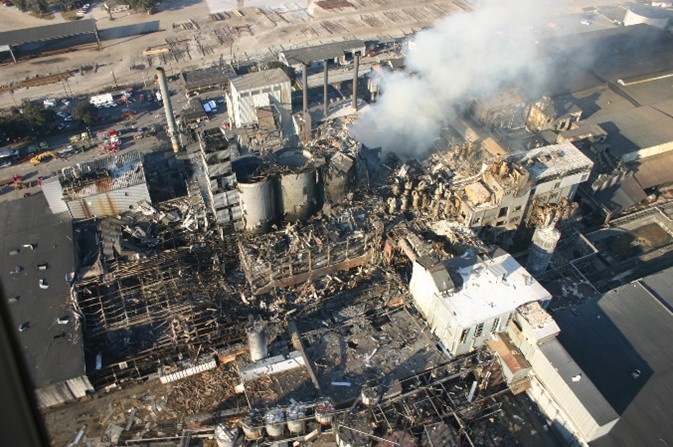Our Solutions: Consulting

Incident investigation (also called accident investigation) is a structured process used to report, track, and find the cause of incidents. The results of an industrial incident can range from minor injuries, property damage, and small chemical spills to fatalities, total loss of property, and major chemical releases. It is important to thoroughly investigate all industrial incidents to identify the root causes and completely understand the incident – what occurred, how did it occur, why did it occur, what failures led to the occurrence, and what robust control systems can be implemented to prevent reoccurrence.
Sigma HSE applies a practical strategy that draws on our decades of plant experience and in-depth understanding of published industry norms. We follow pertinent rules including the National Fire Protection Association’s (NFPA 921) “Guide for Fire and Explosion Investigations”. Our personnel practice a variety of root cause analysis techniques, such as the 5 Whys, Fault and Event Tree, fishbone diagrams, and Root Cause Analysis.

Sigma-HSE has the required resources, knowledge, and experience to investigate incidents at your facility. We apply a practical strategy that draws on our decades of plant experience and in-depth understanding of published industry norms to investigate incidents involving combustible dust, flammable liquids, and gases at your facility.
We investigate accidents to avoid repeating them in the future by identifying the mistakes or contributing factors that led to the accident. Further, investigating accidents is important to defend against claims as it helps determine liability and establish a factual basis for any legal or insurance proceedings. Additionally, investigating accidents helps us find the root cause, which allows us to address the underlying issues and prevent similar accidents from occurring.
During an investigation, it is vital to gather witness statements to allow for different perspectives and testimonies that can contribute to the overall understanding of the incident. It is crucial to take photos as visual evidence can provide valuable information and help in recreating the scene. Moreover, collecting any physical evidence is essential as it can provide tangible proof and support during the investigation process. Finding the root cause and sharing the findings to prevent future accidents is important in order to learn from the incident and implement the necessary changes to avoid similar occurrences in the future.
An Incident investigation is a complex task that requires a multidisciplinary approach involving individuals with expertise in various fields related to process safety management, engineering, and industrial processes. Broadly speaking, the following individuals could be involved in accident investigations: managers, safety officers, technicians, engineers, operational specialists, union representatives, etc.
The individual tasked with conducting the incident investigation not only profoundly influences its effectiveness, but also greatly impacts the safety of employees to prevent the accident from reoccurring. Ultimately, defining the qualifications of a capable individual remains one of the most difficult and underestimated aspects of an incident investigation.
There are a number of steps involved in the investigation of a combustible dust, flammable liquid, and gaseous fire or explosion incident. The success of the investigation will be dependent on upfront planning, accurate documentation, the experience of the investigation team, the support of upper management, and the availability of the necessary resources. Below are the common steps used to investigate an incident:
Our expert consultants apply a practical strategy that draws on our decades of plant experience and in-depth understanding of published industry norms to investigate incidents involving combustible dust, flammable liquids, and gases at your facility.
If you find yourself asking ‘Do I need a consultant to investigate incidents involving combustible dust, flammable liquids, and gases at your facility?’, connect with us today. One our incident investigation experts will guide you through any preliminary questions you may have.
Protect business, people, workplace and the environment from potentially unsafe equipment in hazardous zones and comply with explosive atmospheres regulations. Learn more about how we can assist you today.

Are you visiting Sigma-HSE from outside your region? Visit your regional site for more relevant process safety solutions.